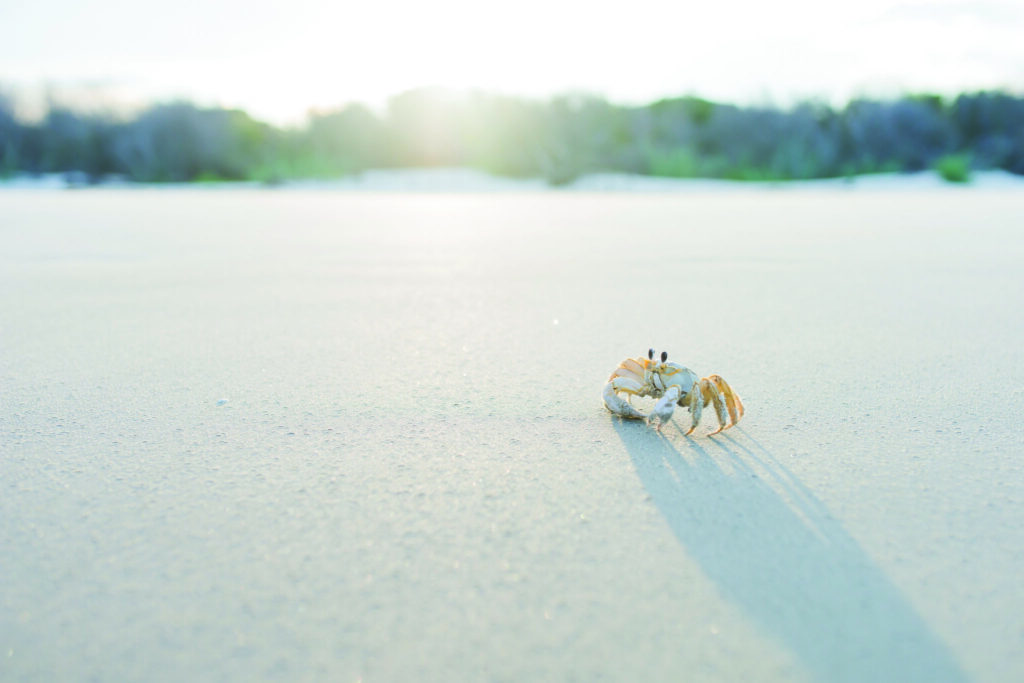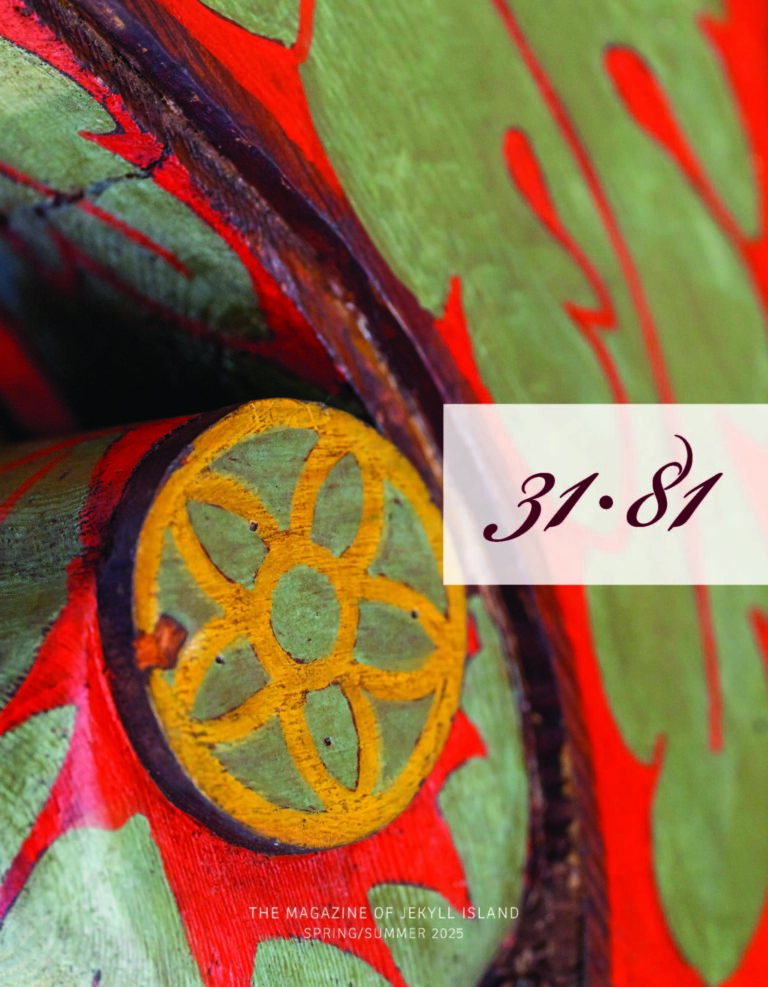They have a spooky rep and a pair of scary eyes, but ghost crabs are chill.
BY TESS MALONE
They mostly come out at night and are as pale as the sands they lurk in, but the name “ghost crab” is really the only creepy part about this crustacean. “If you’re in a place with ghost crabs, you’re in good, quality beach habitat,” says Joseph Colbert, a wildlife biologist with the Jekyll Island Authority.
Ghost crabs (Ocypode quadrata) act as the garbage collectors of the shore, scavenging on dead organisms, vegetation, insects, and other detritus washed up on the beach. They’re also known—this might be a little scary—to nosh occasionally on sea turtle eggs. But they eat fewer than 3 percent of the available eggs, so these little guys are not a major threat to the island’s most famous wild creatures. It’s a “crime of opportunity,” notes Colbert. Ghost crabs are generalists and will eat whatever they stumble upon.
Ghost crabs don’t have many well-known predators—the largest of the crabs are about the size of a tennis ball—but they don’t go completely unchecked in the island food chain. Another island native, the snake-like glass lizard, has been known to take down a ghost crab.
Ghost crabs, maybe living up to their name, are seldom seen by humans. Still, you can look for their homes: They appear as simple holes in the sand, but they can be up to four feet deep. Another fun fact: Younger ghost crabs often patrol closer to the shore, while older ones choose dune real estate. Regardless of age, they make only fleeting trips to the water.
“One distinguishing feature of ghost crabs is their eyes are up on stalks, which is their unique adaptation of terrestrial life,” says Davide Zailo, a research program manager with the JIA. With those oddly upraised eyes, ghost crabs also are one of the few animals that can recognize themselves in a mirror—something not even all primates can do. Now that’s spooky.


